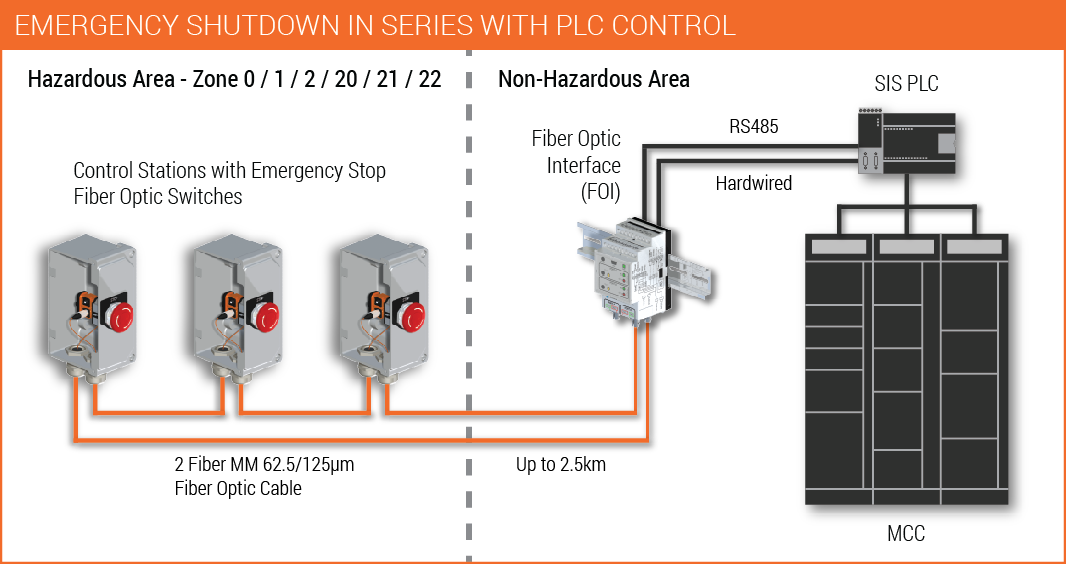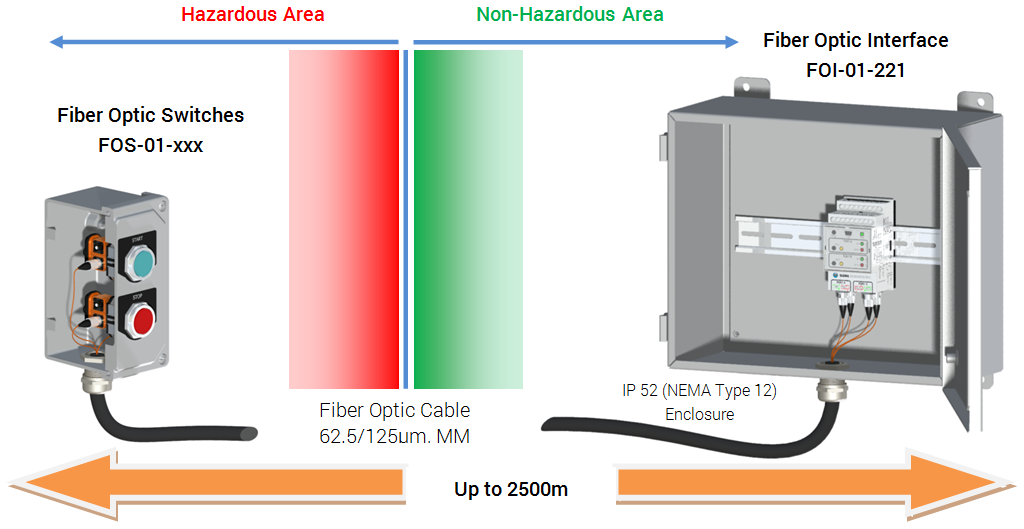
Fiber Optic Switches are a safer and more cost effective alternative to electrical switches in hazardous areas. They allow for control of various equipment up to a distance of 2.5km using a Fiber Optic Interface. Switches are available with a variety of operators (selector, mushroom, pushbutton) with 22mm IEC and 30mm NEMA options.
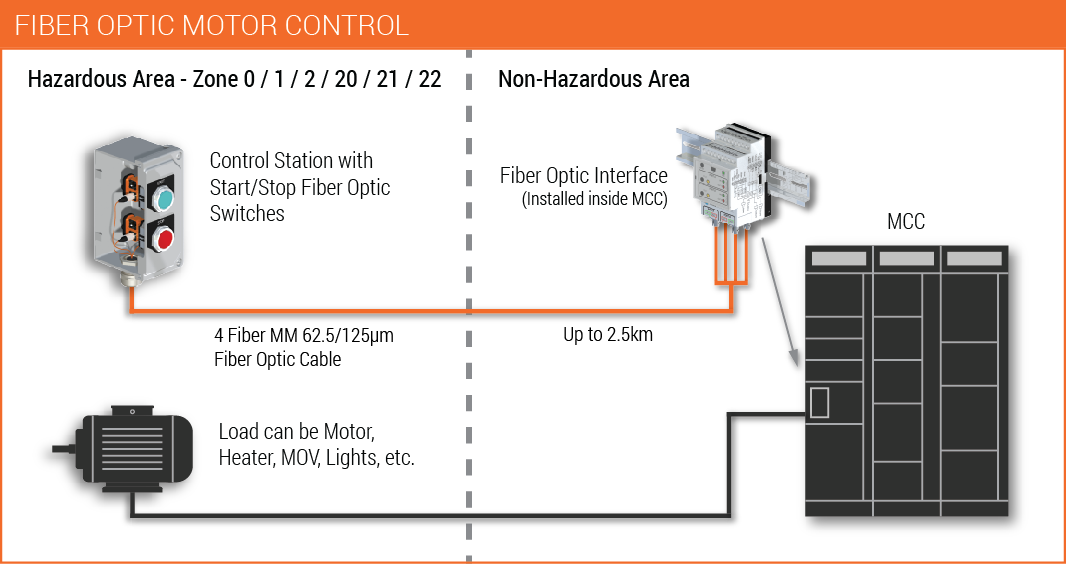
The world’s first networkable Fiber Optic Switches for hazardous area applications. Up to two switches can be connected to one interface, allowing for up to 64 Fiber Optic Switches to be connected through Modbus RTU. With an RS485-To- Ethernet converter the switches can be monitored through a PLC or DCS via an Ethernet connection, allowing for long distance remote control of miscellaneous devices (motors, heaters, MOVs, etc.). Sigma Research Inc. provides a proprietary software (OptiNet) which allows for monitoring of Fiber Optic Switches over Modbus RTU/TCP. Customized software applications can be developed to meet customer requirements.
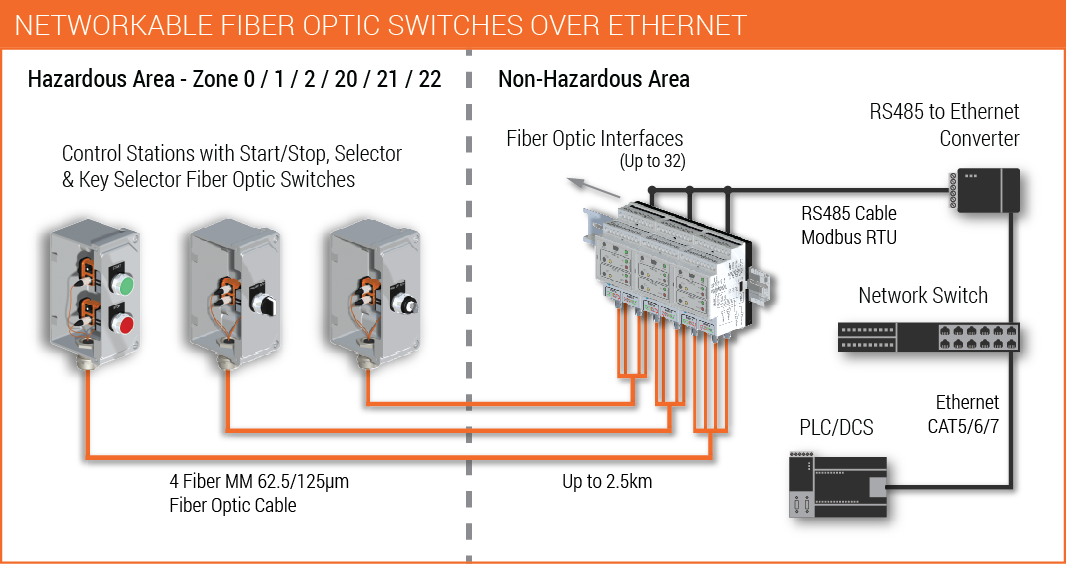
- Fiber Optic Interfaces offer a much more effective and less costly method of breaker intertripping between two substations.
Interfaces are installed in each switch gear (35mm din rail or panel mounted) and communicate via fiber optic cable up to a distance of 5km,
allowing for intertripping of high and low voltage breakers.
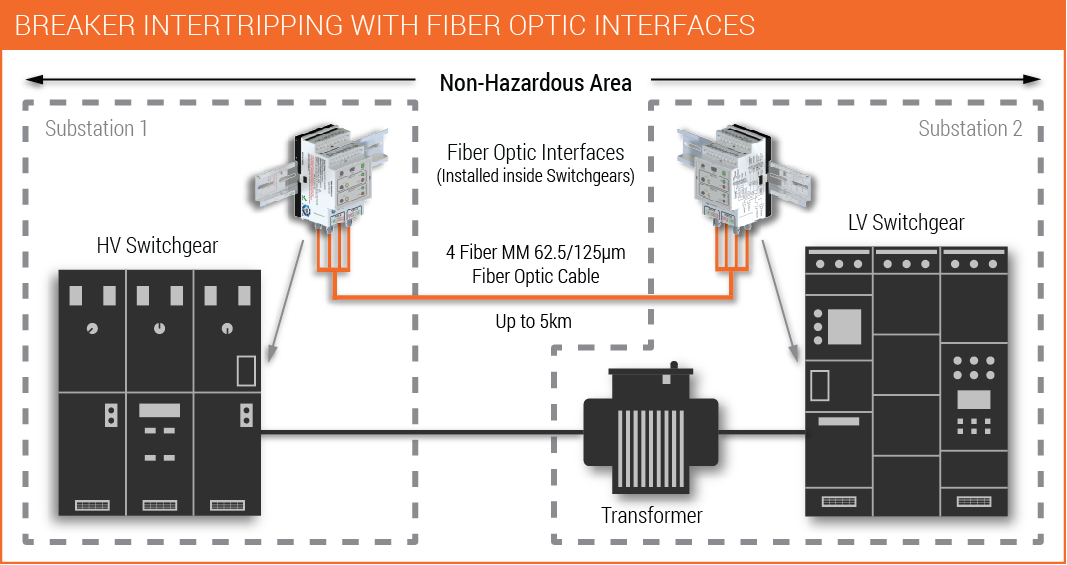
- A safe Redundant Mode can be enabled on each Fiber Optic Interface to increase the reliability of the system.
This is done by connecting both ports of a Fiber Optic Switch to one interface so they can be monitored for any differences.
When a port has failed (ex. laser diode failure, fiber optic cable break, etc.) the Fiber Optic Interface triggers an alarm over RS485 and hardwire, but does not shut off the load.
This mode is geared towards highly critical applications which require a more stringent level of safety and redundancy.
The Redundant Mode is enabled through the OptiLink software via a USB connection to the interface.
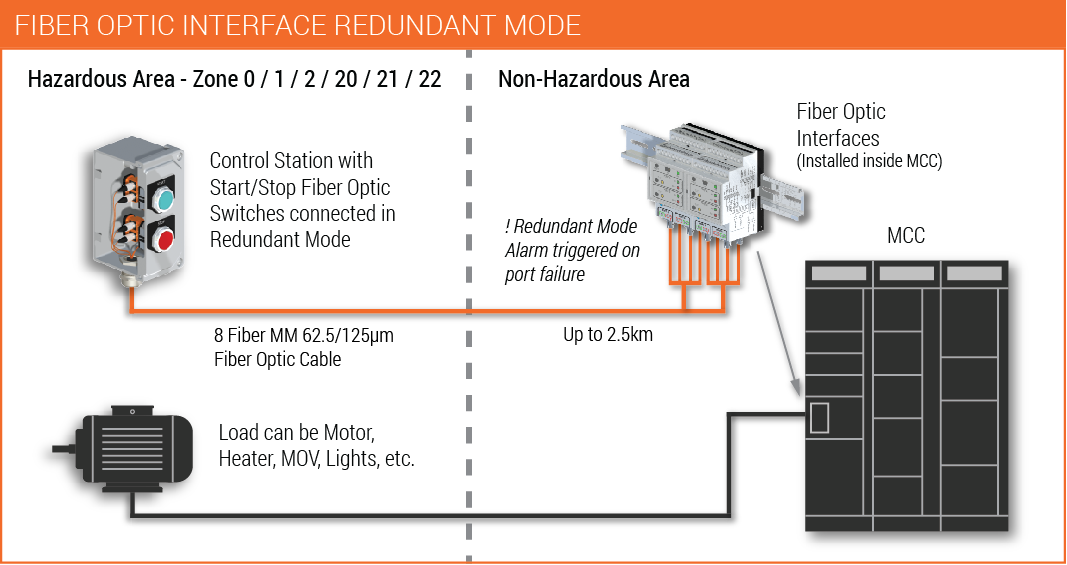
- Fiber Optic Interfaces can be used as optic repeaters for long distance communication.
One interface is used to receive the Fiber Optic Switch signals, then the contacts are hardwired to a second interface which transmits the optical signal again up to 5km.
This method can be used to chain multiple interfaces for control of devices over long distances.
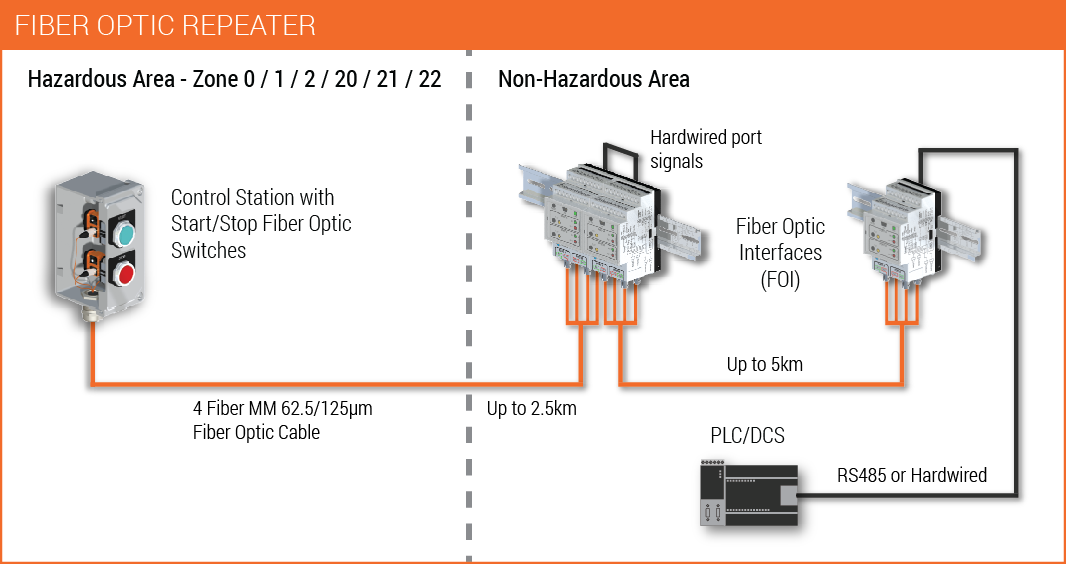
- Up to 64 Fiber Optic Switches can be connected to 32 Fiber Optic Interfaces on a Modbus RTU network.
To extend the network to longer distances a fiber optic modem can be used, allowing control of equipment for distances up to 20km.
The fiber optic modem converts the RS485 signal to an optical signal which is then sent over single-mode fiber optic cable to a receiving modem.
The optical signal is converted back to RS485, which allows for the Fiber Optic Interfaces and switches to communicate with a PLC or DCS through Modbus RTU.
Fiber optic modems can also be chained to extend the signal to even greater distances if required.
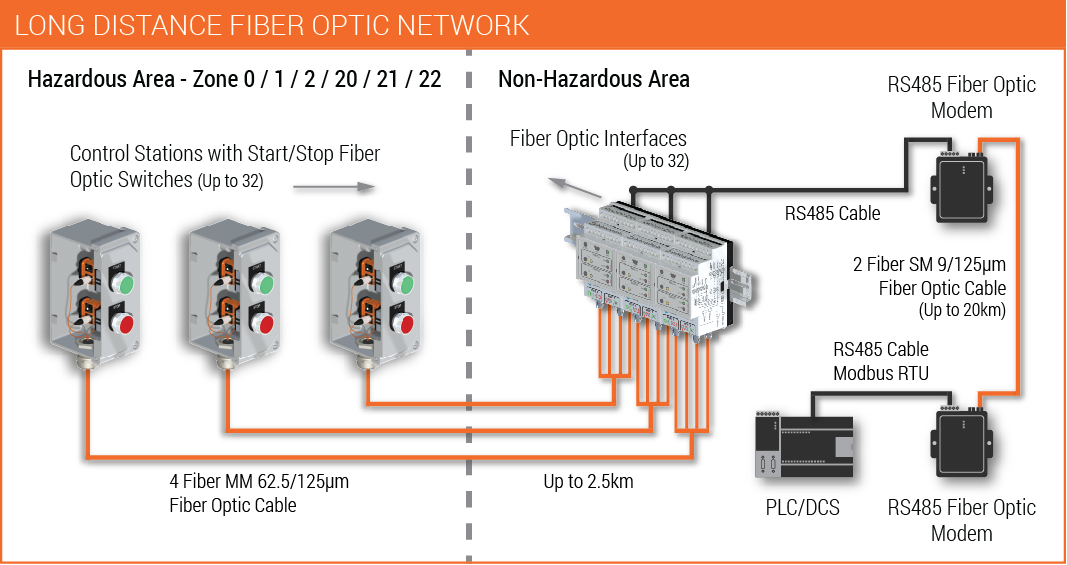
For a complete list of typical applications and industries served, view our application manual on the support page.
SupportRequire a Custom
Application Not Seen Here?
Our products open a new field of applications for fiber optics that is currently unexplored. We will work with you to customize our optical systems for your specific design needs.
Contact Us
